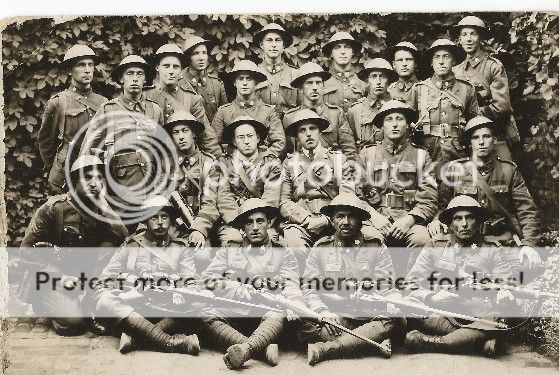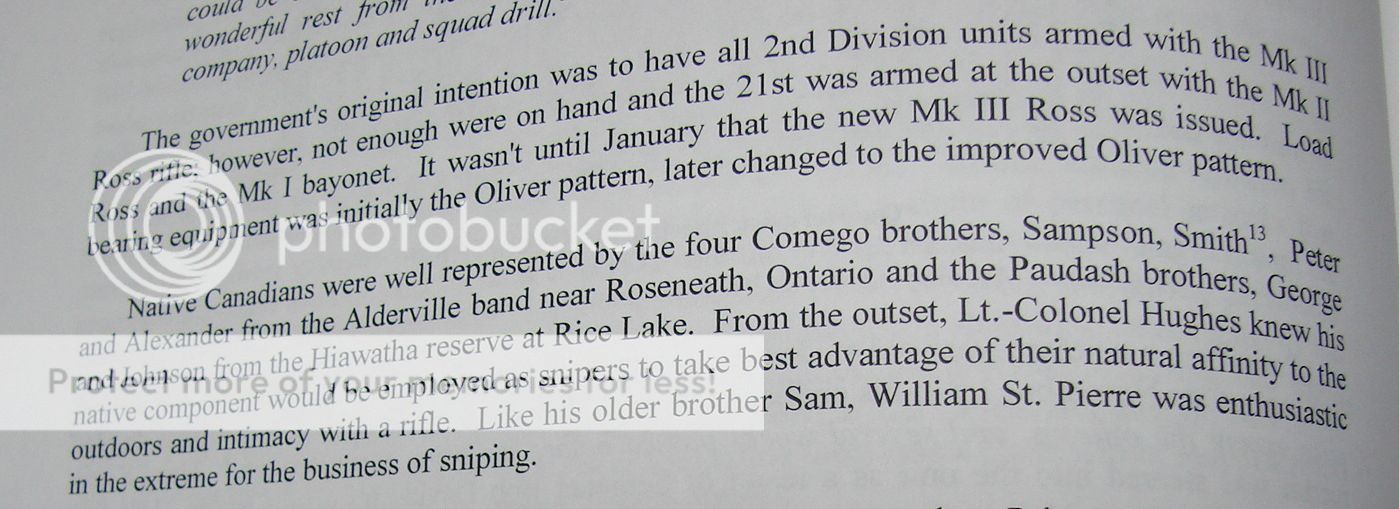http://www.cefresearch.ca/phpBB3/viewtopic.php?f=21&t=805&start=0
^ link containing some of the memoirs of a Sgt.Frank Iriam scout with 8th battalion CEF during 2nd Ypres... In his own words "Now we have been told by lots and lots of people who were not there, and did not happen to have lived through it that the ROSS rifle was a failure as a military arm, and that 1st division was handicapped by being armed with it , and lots of men lost their lives through its jamming in critical places ect. and so on .
Even men who did live through that fight but happened to hail from merrie england will tell you solemnly it was no good and never was.
I cannot see it that way at all. if even a small fraction of the attention, time and money and labor of experts, had been put on the ross , that has been spent on the enfield and springfield, we would now have a rifle that canada might be proud of.
the 8th DURHAMS had short lee enfields and they got into the gassed area early enough to suffer a bit from rust and corrosions. several of us tried to use enfields in that defence, but you had to pry under the handle with the blade of a bayonet to turn the bolt each time and if you succeeded in turning the bolt up, it was then another task to drive it back and then ahead again and in most cases it could not be done. for the bolt seized fast in its channel from corrosion and would not reapeat even after being driven and forced a couple of times back and forward. oil might have helped but there were no oil wells on our part of the front then. "
If anyone gets a chance pick up the book his son wrote called IN THE TRENCHES 1914-1918 By Glenn R. Iriam.
^ link containing some of the memoirs of a Sgt.Frank Iriam scout with 8th battalion CEF during 2nd Ypres... In his own words "Now we have been told by lots and lots of people who were not there, and did not happen to have lived through it that the ROSS rifle was a failure as a military arm, and that 1st division was handicapped by being armed with it , and lots of men lost their lives through its jamming in critical places ect. and so on .
Even men who did live through that fight but happened to hail from merrie england will tell you solemnly it was no good and never was.
I cannot see it that way at all. if even a small fraction of the attention, time and money and labor of experts, had been put on the ross , that has been spent on the enfield and springfield, we would now have a rifle that canada might be proud of.
the 8th DURHAMS had short lee enfields and they got into the gassed area early enough to suffer a bit from rust and corrosions. several of us tried to use enfields in that defence, but you had to pry under the handle with the blade of a bayonet to turn the bolt each time and if you succeeded in turning the bolt up, it was then another task to drive it back and then ahead again and in most cases it could not be done. for the bolt seized fast in its channel from corrosion and would not reapeat even after being driven and forced a couple of times back and forward. oil might have helped but there were no oil wells on our part of the front then. "
If anyone gets a chance pick up the book his son wrote called IN THE TRENCHES 1914-1918 By Glenn R. Iriam.
Last edited:










































































